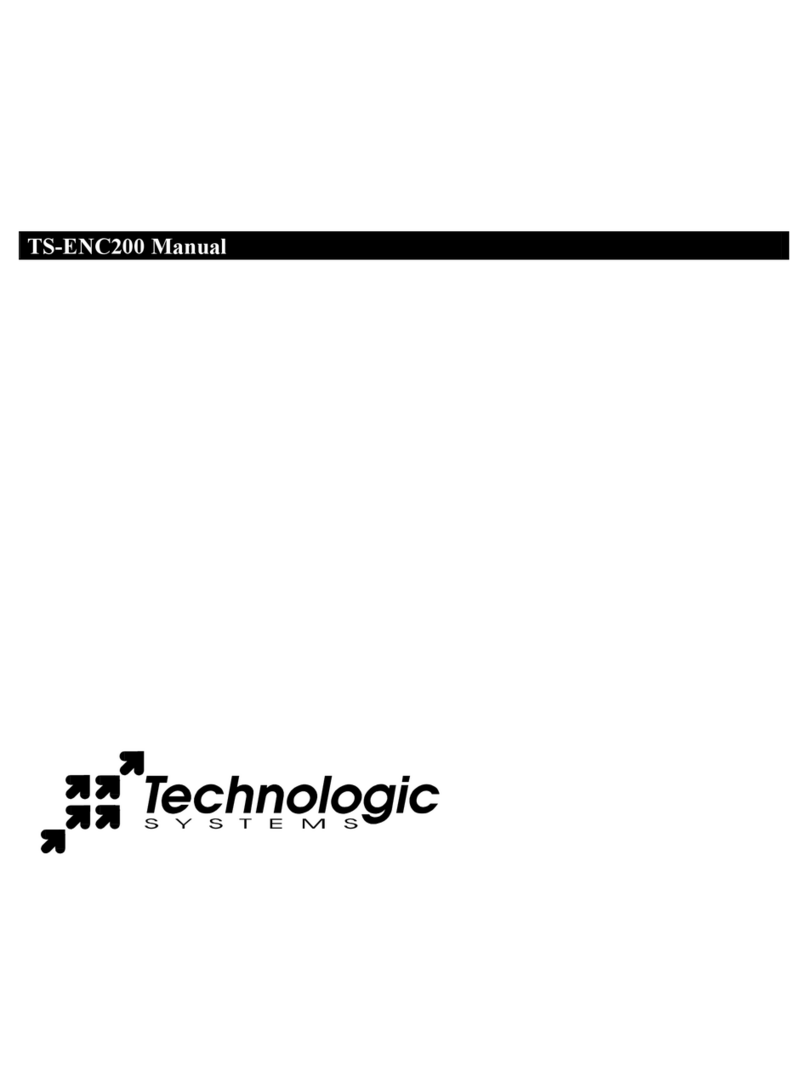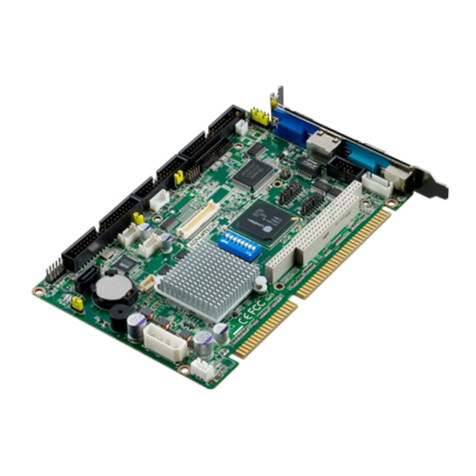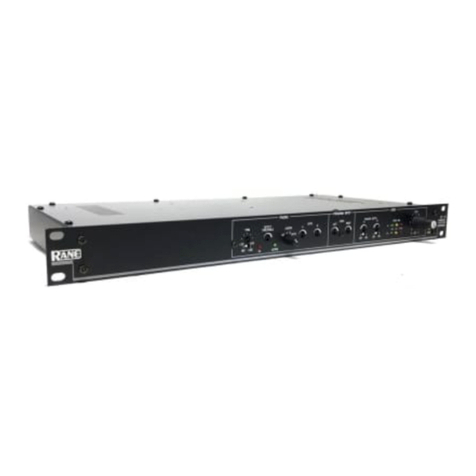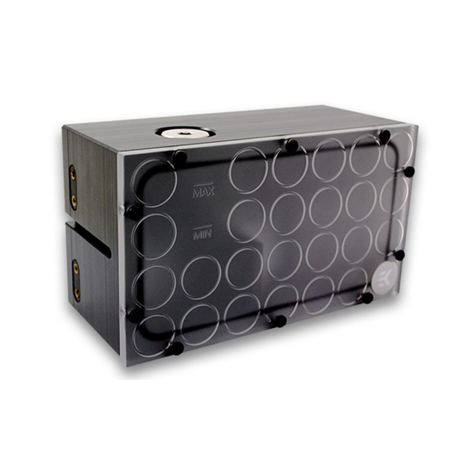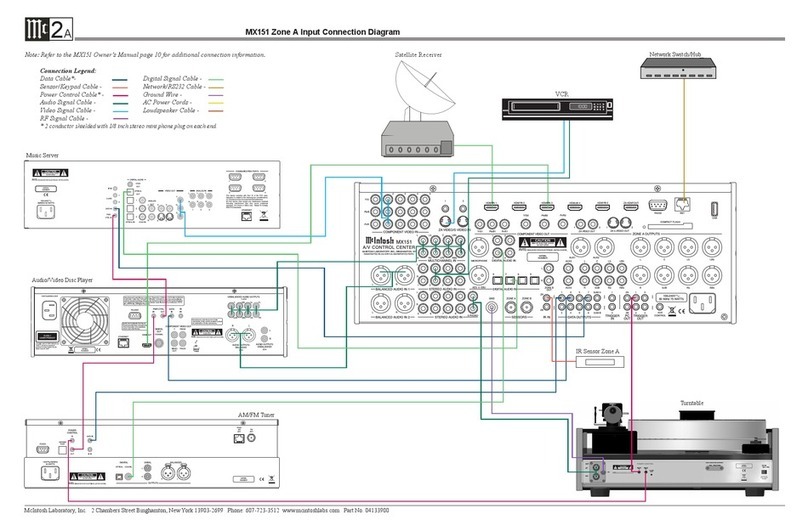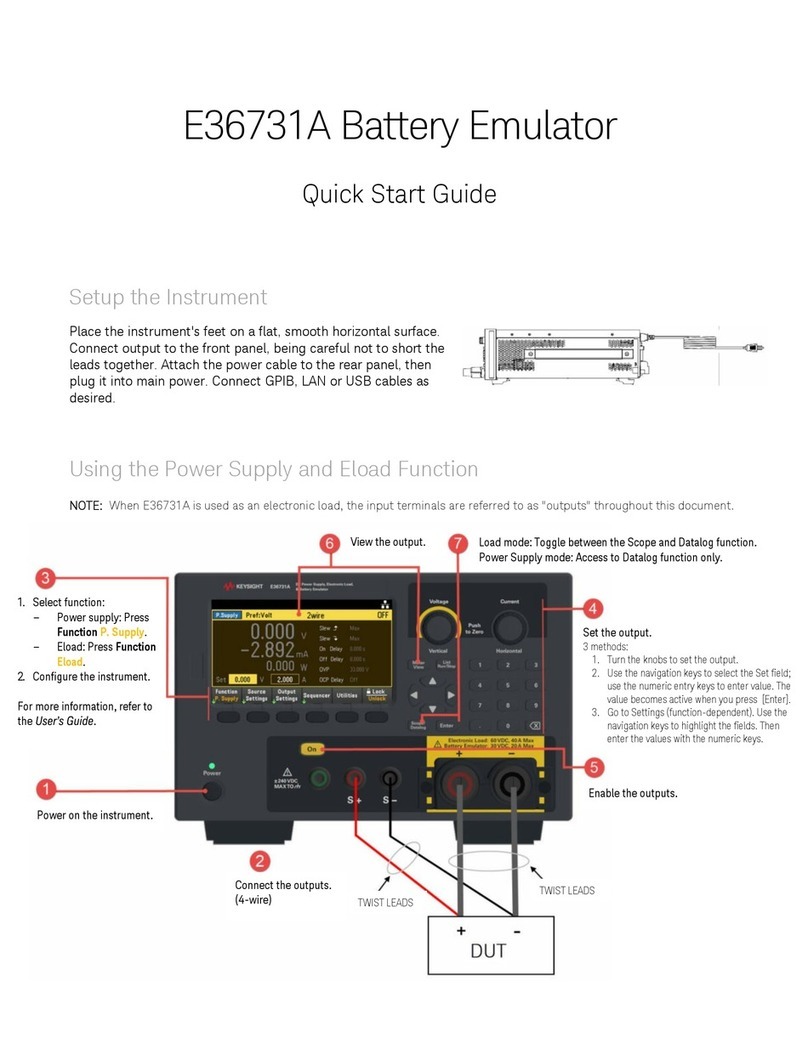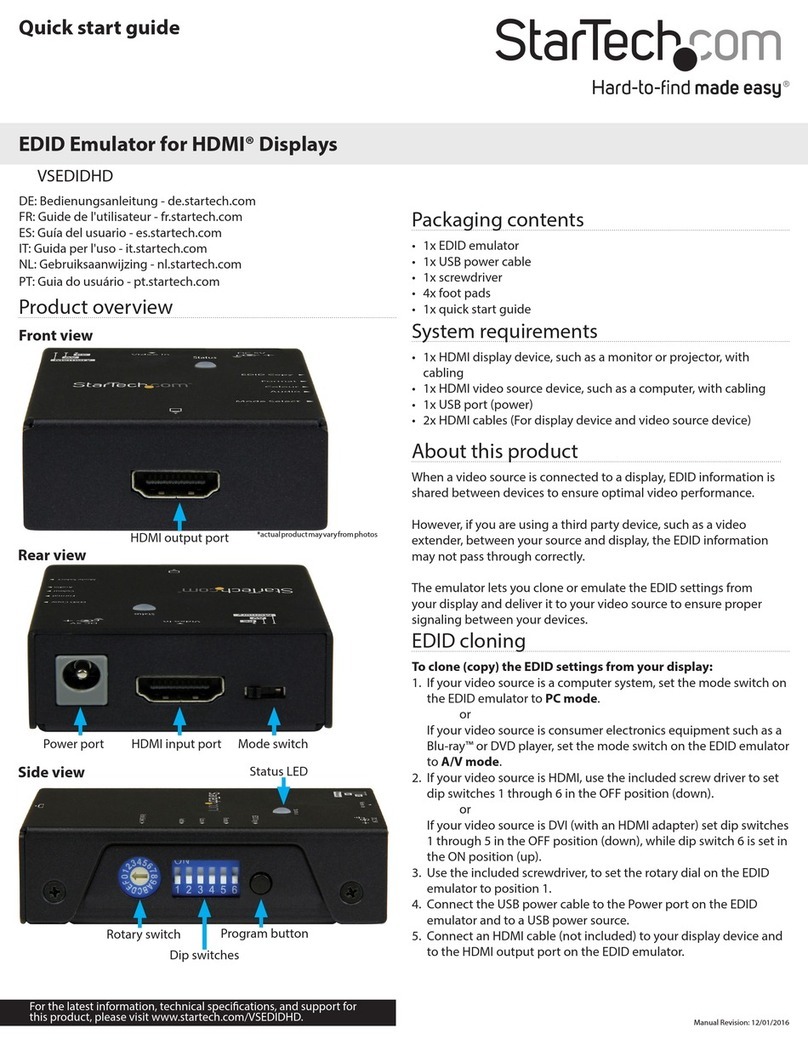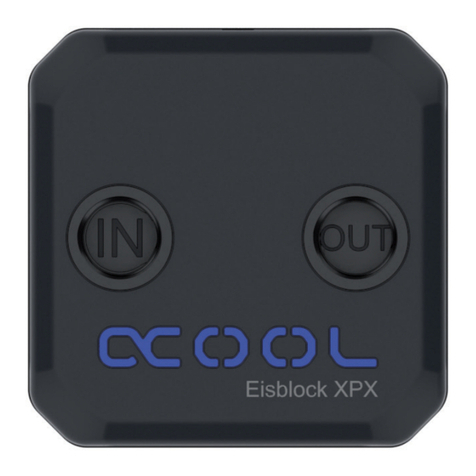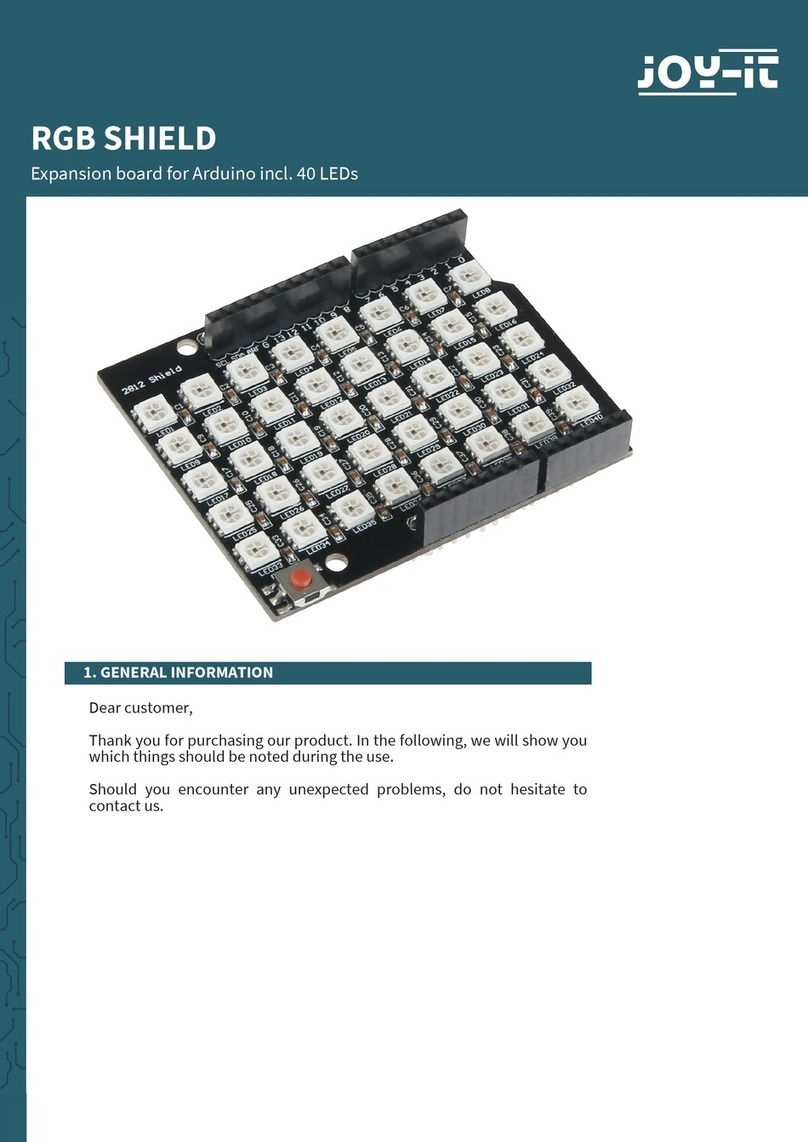Technologic Systems TS-7400 Mounting instructions

TS-7400/TS-9441 MANUAL
© May, 2010 www.embeddedARM.com 1
www.embeddedARM.com
1.4
© May, 2010
TS-7400/TS-9441 Manual
Hardware & Software

TS-7400/TS-9441 MANUAL
Feedback and Update to this Manual
To help our customers make the most of our products, we are continually making additional and
updated resources available on the Technolo ic Systems website (www.embeddedAR .com).
These include manuals, application notes, programming examples, and updated software and
firmware. Check in periodically to see what's new!
When we are prioritizing work on these updated resources, feedback from customers (and prospective
customers) is the number one influence. If you have questions, comments, or concerns about your
Embedded Computer, please let us know at [email protected].
Limited Warranty
Technologic Systems warrants this product to be free of defects in material and workmanship for a
period of one year from date of purchase.
During this warranty period Technologic Systems will repair or replace the defective unit in accordance
with the following process:
A copy of the original invoice must be included when returning the defective unit to Technologic
Systems, Inc.
This limited warranty does not cover damages resulting from lightning or other power surges, misuse,
abuse, abnormal conditions of operation, or attempts to alter or modify the function of the product.
This warranty is limited to the repair or replacement of the defective unit. In no event shall Technologic
Systems be liable or responsible for any loss or damages, including but not limited to any lost profits,
incidental or consequential damages, loss of business, or anticipatory profits arising from the use or
inability to use this product.
Repairs made after the expiration of the warranty period are subject to a repair charge and the cost of
return shipping. Please, contact Technologic Systems to arrange for any repair service and to obtain
repair charge information.
FCC Advisory Statement
This equipment generates, uses, and can radiate radio frequency energy and if not installed and used
properly (that is, in strict accordance with the manufacturer’s instructions), may cause interference to
radio and television reception. It has been type tested and found to comply with the limits for a Class A
computing device in accordance with the specifications in Subpart J of Part 15 of FCC Rules, which
are designed to provide reasonable protection against such interference when operated in a
commercial environment. Operation of this equipment in a residential area is likely to cause
interference, in which case the owner will be required to correct the interference at his own expense.
If this equipment does cause interference, which can be determined by turning the unit on and off, the
user is encouraged to try the following measures to correct the interference:
•Reorient the receiving antenna.
•Relocate the unit with respect to the receiver.
•Plug the unit into a different outlet so that the unit and receiver are on different branch circuits.
•Ensure that mounting screws and connector attachment screws are tightly secured.
•Ensure that good quality, shielded, and grounded cables are used for all data communications.
If necessary, the user should consult the dealer or an experienced radio/television technician for
additional suggestions. The following booklets prepared by the Federal Communications Commission
(FCC) may also prove helpful:
•How to Identify and Resolve Radio-TV Interference Problems (Stock No. 004-000-000345-4)
•Interface Handbook (Stock No. 004-000-004505-7)
These booklets may be purchased from the Superintendent of Documents, U.S. Government Printing
Office, Washington, DC 20402.
© May, 2010 www.embeddedARM.com 2

TS-7400/TS-9441 MANUAL
TABLE OF CONTENTS
1 INTRODUCTION................................................................................................................5
1.1 About this Manual...............................................................................................................5
1.2 Product Overview...............................................................................................................5
1.3 Benefits................................................................................................................................5
Out-of-the-Box Productivity.......................................................................................................5
Impressive Performance............................................................................................................5
1.4 Features...............................................................................................................................6
1.5 Confi urability....................................................................................................................6
On-board Options.......................................................................................................................6
External Accessories.................................................................................................................6
1.6 TS-WIFIBOX Application Kit...............................................................................................8
1.7 TS-ARM Development Kit...................................................................................................8
1.8 Software and Support.........................................................................................................9
Linux OS Support.......................................................................................................................9
Other OS Support ....................................................................................................................10
2 GETTING STARTED.......................................................................................................11
2.1 Installation Procedure......................................................................................................11
Handlin the Board Safely.......................................................................................................11
Setup and Installation Instructions ........................................................................................11
Setup Tools ..............................................................................................................................11
Setup Procedure ......................................................................................................................11
Disconnectin AC Power ........................................................................................................11
2.2 Console and Power Up.....................................................................................................11
TS-7400 Recovery.....................................................................................................................13
2.3 Bootup Process................................................................................................................13
2.4 Loadin or Transferrin Files..........................................................................................13
Transferrin Files via the Ethernet Port.................................................................................13
Transferrin Files via Flash Memory Device..........................................................................14
Zmodem Downloads................................................................................................................14
2.5 TS-7400 production lifetime.............................................................................................14
3 SOFTWARE.....................................................................................................................15
3.1 Software-update facility in factory confi uration...........................................................15
3.2 Updatin /Recoverin the bootloader kernel...................................................................15
3.3 Bootin custom kernels and OS ima es from within Linux..........................................16
3.4 Accessin internal TS-7400 re isters from Linux userspace........................................17
3.5 Chan in /Updatin the TS-BOOTROM...........................................................................17
3.6 SD flash card security features.......................................................................................19
3.7 TS-7400 specific Linux devices.......................................................................................19
3.8 Debian Linux OS...............................................................................................................20
apt- et.......................................................................................................................................20
3.9 Gettin Started with Linux...............................................................................................21
Lo in In and Basic Commands...........................................................................................21
Shutdown..................................................................................................................................21
Initialization Scripts..................................................................................................................21
Network Setup..........................................................................................................................21
Settin Up the networkin with TS-Linux...............................................................................22
Settin Up the networkin with Debian..................................................................................22
© May, 2010 www.embeddedARM.com 3

TS-7400/TS-9441 MANUAL
Network Services......................................................................................................................23
4 HARDWARE COMPONENTS.........................................................................................24
4.1 Processor..........................................................................................................................24
Cirrus EP9302...........................................................................................................................24
MMU...........................................................................................................................................25
Interrupts...................................................................................................................................25
4.2 Memory..............................................................................................................................26
On-Board SDRAM.....................................................................................................................26
On-Board NAND Flash.............................................................................................................26
USB Flash Drive or Compact Flash Card...............................................................................27
SD Memory Card.......................................................................................................................27
4.3 Glue Lo ic CPLD...............................................................................................................28
4.4 Real-Time Clock................................................................................................................28
4.5 Watchdo Timer................................................................................................................28
5 COMMON INTERFACES GENERAL INFORMATION...................................................30
5.1 Serial Ports .......................................................................................................................30
5.2 Di ital I/O...........................................................................................................................30
5.3 A/D Converters..................................................................................................................30
Interpretin Cirrus A/D Converter...........................................................................................31
5.4 General Purpose 8-bit Multiplexed Bus (GPBUS):.........................................................32
6 CONNECTORS AND HEADERS....................................................................................34
6.1 10/100 Base-T Ethernet Connector..................................................................................34
6.2 USB Connector.................................................................................................................34
6.3 SD Card Connector – CPLD.............................................................................................35
6.4 General Header.................................................................................................................35
Upper header............................................................................................................................35
Lower header............................................................................................................................35
Upper header Pin-Out..............................................................................................................36
Lower header pin-out...............................................................................................................37
6.5 TS-9441 Console Header..................................................................................................38
6.6 TS-9441 JTAG Header......................................................................................................38
6.7 Power Supply Connector.................................................................................................38
7 LEDS, JUMPERS AND BUTTONS.................................................................................39
7.1 Status LEDs.......................................................................................................................39
7.2 Buttons..............................................................................................................................39
7.3 Jumpers.............................................................................................................................39
8 SPECIFICATIONS...........................................................................................................40
9 FURTHER REFERENCES..............................................................................................41
APPENDIX A: DOCUMENT HISTORY...............................................................................42
APPENDIX B: MEMORY AND REGISTER MAP...............................................................43
APPENDIX C: TS-ARM SBC FEATURE MATRIX.............................................................45
APPENDIX D: CONTACT TECHNOLOGIC SYSTEMS.....................................................46
© May, 2010 www.embeddedARM.com 4

TS-7400/TS-9441 MANUAL
INTRO UCTION
1 INTRODUCTION
1.1 About this Manual
This manual is intended to provide the user with an overview of the board and benefits,
complete features specifications, and set up procedures. It contains important safety
information as well.
1.2 Product Overview
The TS-7400 is a small (2.9" x 4.7") embedded computer module (System on odule)
that is designed to provide extreme performance for applications which demand high
reliability, fast bootup/startup and connectivity at low cost and low power, such as point-of-
sales (PoS), vending machines, data acquisition units, data recorder modules, etc.
The TS-7400 System on odule runs on a 200 Hz AR 9 processor with power under 2
Watts. Low board complexity, low component count, and low power/heat makes for an
extremely reliable embedded engine. The TS-7400 is available in thousands of
configurations, many of which are Commercial off the Shelf (COTS) and available to ship
today.
The EP9302 processor from Cirrus is the highly integrated 200 hz AR 9 processor that
the TS-7400 is built around and includes an on-chip 10/100 ethernet, USB, serial, and
Flash/SDRA controller. A supplemental PLD provides glue logic, and watchdog timer.
Integer CPU performance is about 20% faster than our 133 hz x86 offerings.
Even with the standard power consumption of 2 Watts, the TS-7400 runs without fans or
heat sinks in the temperature range of -40° to +70°C. Extended Temperature -40° to
+85°C is also standard, but CPU clock must be decreased to 166 Hz for higher
temperatures.
Unlike other TS-7000 AR products, the TS-7400 is not a stand-alone Single Board
Computer. The TS-9441 peripheral board is needed during development in order to
configure and set up the TS-7400 flash system. The TS-9441 has 2KB EEPRO , and
2 B serial Flash, so it can be used to bring-up/recover "dead" TS-7400 boards. Using a
console on the TS-7400 is only possible through the TS-9441 RS232 serial port, named
Console Header. Also, the TS-9441 enables regulated 5VDC power in. Once the TS-7400
is configured and loaded, it can safely run stand-alone.
1.3 Benefits
Out-of-the-Box Productivity
Technologic Systems Linux products get you to your application quickly. Our Single Board
Computers boot directly to Linux as shipped. There is no complicated C OS setup or
configuring of a Linux derivative Operating System to source, define, and load.
Technologic Systems has pre-configured each SBC in flash memory.
The TS-7400's user can power up the board and immediately (using the TS-9441) begin
application development. Of course, should you wish to configure your own version of
Linux or use a different operating system, this is easy too. Technologic Systems provides
the solution to fast application development without tedious OS configuration.
Impressive Performance
The AR 920T's 32-bit architecture, with a five-stage pipeline, delivers very impressive
performance at very low power. The EP9302 CPU has a 16 KB instruction cache and a 16
© May, 2010 www.embeddedARM.com 5

TS-7400/TS-9441 MANUAL
INTRO UCTION
KB data cache to provide zero-cycle latency to the current program and data, or they can
be locked to guarantee no-latency access to critical sections of instructions and data. For
applications with instruction-memory size restrictions, the AR 920T’s compressed Thumb
instruction set can be used to provide higher code density and lower Flash storage
requirements.
As a benchmark, the TS-7400's CPU integer performance, at a supplied 200 Hz, is
about twice as fast as the Technologic Systems 133 Hz 586-based products.
1.4 Features
The TS-7400 comes standard with these features:
✔TS-Linux Embedded Operating System Installed
✔200 Hz AR 9 CPU with U
✔32 B integrated high-speed flash with hardware ECC (Boots to TS-Linux)
✔32 B RA (64 B or 128 B optional)
✔2 USB 2.0 Compatible OHCI ports (12 bit/s ax)
✔3 TTL serial UARTs
✔SD Flash card connector
✔10/100 egabit Ethernet port
✔20 general purpose I/O pins with Schmitt trigger
✔Power requirements are 5V DC @ 350mA
✔Flexible 40 pin expansion connector
✔Small size 2.9 x 4.7 inches (7.4 x 11.9 cm)
✔Optional battery-backed real time clock
✔Operating Temperature Range: Fanless from -40° to +70°C
✔Extended Temperature -40° to +85°C standard at lower CPU clock speeds
✔RoHS Compliant
1.5 Confi urability
The TS-7400 can be configured for your application using the following available on-board
options and external accessories:
On-board Options
✔TS-7400-yyy-32F: TS-7400 with up to 128 B of on-board SDRA . For example, TS-
7400-64-32F selects model TS-7400 with 64 B of SDRA .
✔OP-BBRTC: on-board sealed battery backed RTC
✔OP-PS30V : 8-30VDC switching power input through screw terminal
✔OP-TMPSENSE: High-precision temperature sensor
Note
The TS-7400 SBC is RoHS compliant by default (Restriction of Hazardous
Substances ) Directive. Contact Technologic Systems for RoHS support.
External Accessories
✔SD-512: 512 B SD Flash Card with full AR tool chain installed and Debian (included
in KIT-7400)
© May, 2010 www.embeddedARM.com 6

TS-7400/TS-9441 MANUAL
INTRO UCTION
✔USB-FLASH-256: 256 B flash drive with full AR tool chain installed and Debian
✔WIFI-G-USB: Linux-supported USB 802.11g WiFi transceiver for wireless networking
✔TS-9441 : Boot/Console Peripheral Board for TS-7400 (required during development)
(included in the KIT-7400)
✔TS-DC420-ENC: Peripheral board provides 8-30VDC power input, Xbee radio socket,
DIO lines, 3 A/D channels, 3 CO ports, RS-485/RS-422 with full-duplex and
aluminum enclosure
✔PS-18VDC-REG: Regulated 18VDC wall mounted power supply (compatible with OP-
PS30V)
✔PS-5VDC-1AMP: 5VDC 1A P Power Supply (100-120V) (included in the KIT-7400)
✔PS-5VDC-2_5REG: 5VDC 2.5A P Regulated Power Supply
Note
Check our website at www.embeddedARM.com for an updated list of options
and external accessories
© May, 2010 www.embeddedARM.com 7

TS-7400/TS-9441 MANUAL
INTRO UCTION
1.6 TS-WIFIBOX Application Kit
The TS-7400 powers the TS-WIFIBOX application kit, a small wifi-enabled computer box.
For more information see http://www.embeddedarm.com/products/board-detail.php?
product=TS-WIFIBOX
1.7 TS-ARM Development Kit
The KIT-7400 TS-AR Development Kit for the TS-7400 Single Board Computer includes
all equipment necessary to boot into the operating system of choice and start working.
The development kit is highly recommended for a quick start on application development.
The KIT-7400 Development Kit contains a 256 or 512 B Flash drive (SD Card) which
includes:
✔A self-hosting AR installation of the Debian Linux 3.0 distribution compiled for AR
✔gcc 2.95.4 and gcc 3.0 compiler with full tool-chain
✔Hardware test routines source code and other example source code
✔Debian package system: apt-get, tasksel, dselect
The development kit additionally includes:
✔SD Card reader
✔5 VDC regulated power supply (international versions available)
✔NULL modem cable
✔Adapter cable from 10-pin header to DB9
✔Various cables for connection DIO, LCD, Keypad, etc.
✔Development CD with complete TS-Kernel source, manuals, example code, etc.
✔Printed supporting documentation for TS-7400 Hardware, Linux for AR and
Development Kit.
© May, 2010 www.embeddedARM.com 8

TS-7400/TS-9441 MANUAL
INTRO UCTION
Note
Single Board Computer is not included on the Development Kit (sold separately).
1.8 Software and Support
Software features include:
✔Boots Linux out-of-the-box in 1.10 seconds (to shell prompt).
✔Flexible booting options (SD card, NAND flash or offboard SPI flash)
✔SD card pre-installed with standard Debian Linux distribution.
✔Firmware has ability to verify boot medium CRC before allowing bootup.
✔Ability to boot password-locked SD cards.
✔Startup Linux miniroot scripts allows flexible root and backup filesystem selection (SD,
flash, NFS, USB flash) as well as software field upgrade support.
✔Linux "bootload" program allows booting of Linux kernels and other OS' from within
Linux itself.
Technologic Systems provides:
✔Free system software and documentation updates available on our web site
✔Long-term availability and short lead-times (20 year history)
✔Free technical support from engineers by phone, fax, or email
✔Production tests and burn-in prior to shipment on every board.
✔Board customizations available with no minimum order.
✔Factory loading of customer supplied software available.
✔Readily available hardware and software professional services for hire.
✔30-day, money back guarantee on evaluation units
✔One-year, full warranty
Linux OS Support
The AR processor (the EP9302) comes from Cirrus and the platform is very similar to
the Cirrus EDB9302 evaluation board. Cirrus has strongly promoted running Linux on this
chip and has done most of the legwork in creating a patch set to the Linux 2.4 kernels, but
we have also had to modify the Linux Kernel (TS-Kernel) so it can support NAND and
NOR Flash chips (via mtd drivers), a compact flash IDE driver, A/D converters, SD Card
through the TS-SDCORE, additional ethernet ports and more. If you want to use Linux
and aren't tied to the x86 architecture, the TS-7400 can be very cost-effective.
© May, 2010 www.embeddedARM.com 9

TS-7400/TS-9441 MANUAL
INTRO UCTION
Debian can also be used with an NFS root file system
or USB flash drives. The TS-Kernel used is based
upon the version 2.4.26, patched and compiled for
the Cirrus EP9302 AR 920T processor, and is real-
time capable through RTAI.
The root file system used by the Linux OS can be any
of the following:
✔EXT2 file system image in the SD card
✔JFFS/YAFFS file system image in the on-board
Flash
✔NFS root, via Ethernet port (after fast bootup,
mount a NFS root and chroot to it)
Note
The TS-Kernel supports the Real-Time Application Interface (RTAI project),
making the embedded operating system capable of handling applications with
hard real-time restrictions.
Other OS Support
The TS-7400 can be loaded with other operating systems such as Windows CE, NetBSD,
etc. Technologic Systems will provide support for these, and possibly other operating
systems, in the future. Currently, only Linux and NetBSD are supported on the TS-7400.
© May, 2010 www.embeddedARM.com 10

TS-7400/TS-9441 MANUAL
GETTING STARTE
2 GETTING STARTED
2.1 Installation Procedure
Before performing any set up or placement procedures, take the precautions outlined in
this section.
Handlin the Board Safely
Be sure to take appropriate Electrostatic Discharge (ESD) precautions. Disconnect the
power source before moving, cabling, or performing any set up procedures.
!Warnin
Inappropriate handling may cause damage to the board.
Setup and Installation Instructions
Follow these guidelines for safety and maximum product performance:
✔Observe local health and safety requirements and guidelines for manual material
handling
Setup Tools
Depending on placement and cabling, you may need the following tools:
✔Small flat-blade screwdriver
✔Small Phillips screwdriver
Setup Procedure
After locating, setting up, grounding, and cabling the TS-7400:
✔Apply power
✔onitor the TS-7400 using a terminal emulator to verify that the board is operating
properly
Disconnectin AC Power
✔Unplug from the power source.
✔Disconnect other cables as required.
2.2 Console and Power Up
An ANSI terminal or a PC running a terminal emulator and a TS-9441 peripheral are
required to communicate with your TS-7400 computer. Simply connect an ANSI terminal
(or emulator) to the console header on the TS-9441 using a null modem cable and the
DB9 adapter for the header (these are included in the TS-AR Development Kit), using
serial parameters of 115,200 baud, 8 data bits, no parity, no flow control, 1 stop bit (8N1).
If you are running Linux, the minicom program works well, Windows users can run the
Hyperterm application. Technologic Systems offers a null modem cable with both 25 pin
and 9 pin connectors at each end as part number CB7-05. The TS-9441 also requires the
10-pin header to 9-pin Sub-D adapter which is P/N: RC-DB9.
Note
TS-7400 only has TTL UARTs and to connect to the serial console with a PC's
serial port you need to use the TS-9441 or external RS232 level converters.
© May, 2010 www.embeddedARM.com 11

TS-7400/TS-9441 MANUAL
GETTING STARTE
Connect a regulated 5VDC, (1A minimum) power source on the power input connector.
Please note the polarity printed on the board. The boot messages, by default, are all
displayed on CO 1 at 115200 baud. The board will also answer telnet connections to IP
address 192.168.0.50.
The TS-7400 board has Linux installed by default on onboard flash. Upon bootup, The
board will boot within 1.1 seconds to a Linux prompt on UART #0 (/dev/ttyA 0).
The default fastboot shell has available several standard Linux commands through the
"busybox" program. Technologic Systems has made several modifications to the busybox
source code to keep bootup as fast and simple as possible. The modified source code is
available to Technologic Systems customers.
Upon bootup, you should see out of your serial port:
>> TS-FLASHBOOT - built Sep 27 2006
>> Copyright (c) 2006 Technologic Systems
.
.
.
Finished booting in 1.10 seconds
Type 'tshelp' for help
$
At this point, if you type 'exit' from the serial shell, the TS-7400 will then attempt a full
Debian Linux bootup from the SD card on partition #3. If the SD card is not present or the
EXT2 filesystem does not pass a basic sanity test or the special file "/notrootfs" exists, a
demonstration version of a miniature Linux distribution contained on the onboard flash
itself is instead booted. This version of Linux, named TS-Linux, contains Apache, SSH,
PPP, and FTP server and many other common utilities and libraries and is identical to the
distribution installed by default on the TS-7200 line of single board computers. Other
community-supported embedded Linux distributions are available. For instance, the
"Buildroot" project at http://buildroot.uclibc.org/ allows one to easily build custom
filesystems and cross-toolchains.
Should you wish to automatically bypass the fastboot and proceed directly into starting the
SD card version of Linux, you can do so with the following command issued to the
fastboot shell:
ln -sf /linuxrc-sdroot /linuxrc; save
To automatically boot from onboard flash the command is:
ln -sf /linuxrc-mtdroot /linuxrc; save
To automatically boot from USB flash dongle or USB hard drive:
ln -sf /linuxrc-usbroot /linuxrc; save
To get back to the fastboot shell, you can do so by placing the file "/fastboot" in the root
directory of the filesystem.
The '/linuxrc' file is a shell script that is the very first thing run by the kernel on startup.
Several sample startup scripts are included and can either be used directly ("ln -sf /linuxrc-
XXX /linuxrc" command) or modified to include custom bootup logic. These shell scripts
were designed to be as fast and simple as possible (approximately 45 lines of code) for
easy customer modifications. It is anticipated that this shell script be modified from the
default to implement things in the customer's product such as backup configurations,
software field updates, conditional booting/verification of SD cards, etc. Technologic
Systems professional services are available should you need help in implementing a
specific feature.
© May, 2010 www.embeddedARM.com 12

TS-7400/TS-9441 MANUAL
GETTING STARTE
TS-7400 Recovery
Although it is easy to get your board into an unbootable state during development if you
botch a modification, it is equally easy to use the TS-9441 to recover the default startup.
To do so, place the "Boot" jumper on the TS-9441 and reset the board. In approximately
3 seconds, the board will have fastbooted to the TS-9441 flash and presented a shell
prompt. To recover the default initrd and linuxrc, enter the command "save", remove the
Boot jumper, and reboot back to a restored to factory default TS-7400.
2.3 Bootup Process
The processor first runs code from the dedicated EEPRO chip containing the TS-
FLASHBOOT bootup program. TS-FLASHBOOT sets up bus timing, SDRA , and other
low-level hardware initialization. It also loads sector 0 from the NAND flash chip at 0x1000
physical address. Once its loaded, it jumps (in AR Thumb mode) to the first instruction,
with register r0 containing a function pointer to a routine to read sectors from the boot
media (NAND flash) and in r1 a routine to a function to print a character string to the serial
port. The routines have the following C signature:
void read(unsigned int sector unsigned char *buf unsigned int
nsectors)
void puts(unsigned char *buf)
By default, whats contained in sector 0 of the NAND flash is a DOS-style partition table at
offset 446 and a 446 byte Linux-specific kernel bootloader at offset 0. This mini-
bootloader contains code to parse the partition table looking for 2 partitions marked with
partition ID '0xda'. It uses the start sector and size parameters of the partition table to
load the first partition (Linux kernel) at offset 0x2180000 and the second partition (if it
exists) at 0x1000000 (Linux initrd). If a bad sector or a sector failing an ECC check is
detected, it skips to the next 16kbyte boundary and continues-- in this way, NAND chips
with bad sectors remain bootable. Next, it composes up the necessary pre-boot ATAG
data structures required by Linux kernels and jumps to address 0x2180000 at which point
the Linux kernel takes over.
One of the first things the Linux kernel does is disable the hardware watchdog. The
watchdog is armed for 8 second expiry before automatic reboot and will be constantly fed
as long as the firmware or BR Linux bootloader is reading from flash. The board will
appear to constantly reboot every 8 seconds should something go wrong. The TS-7400
uses an external watchdog implemented in the CPLD instead of the CPU internal
watchdog to guarantee proper reset operation in the case of a severely malfunctioning
CPU. The CPU internal watchdog is also available, but Technologic Systems does not
recommend using it.
2.4 Loadin or Transferrin Files
Three methods are available for transferring files between a desktop PC and your TS-
7400: Ethernet downloads, flash memory devices, and Zmodem downloads. Full
descriptions of each are detailed below. Other programs that use serial ports to transfer
should work as well.
Transferrin Files via the Ethernet Port
The default JFFS Linux root file system includes a small FTP server that can be used for
uploading/downloading of files across an Ethernet network. Simply point your preferred
FTP client to your TS-7400 IP address (default is 192.168.0.50). You can login as root or
any valid user previously created from the useradd utility. By default, the JFFS image will
not accept anonymous FTP.
© May, 2010 www.embeddedARM.com 13

TS-7400/TS-9441 MANUAL
GETTING STARTE
Transferrin Files via Flash Memory Device
An SD card or an USB flash memory card can be used to easily move files from a host
system. We suggest using a low-cost SanDisk USB Compact Flash card or SD card
interface for your host system. USB memory devices need no extra accessory to connect
to the host PC. The flash memory devices can then be hot swapped (inserted or removed
without rebooting the host PC).
Zmodem Downloads
Using the Zmodem protocol to send files to and from the TS-7400 SBC is simple and
straightforward. The only requirement is a terminal emulation program that supports
Zmodem, and virtually all do. If you are using Windows 95 or later for your development
work, the HyperTerminal accessory works well.
To download a file to the TS-7400 from your host PC, execute lrz at the Linux command
line on the TS-7400 (while using console-redirection from within your terminal emulator)
and begin the transfer with your terminal emulator. In HyperTerminal, this is 'Send File...'
from the 'Transfer' menu.
To upload a file from the TS-7400 to your host PC, execute lsz <FILENA E> at the Linux
command line on the TS-7400 and start the transfer in your terminal emulator. any
emulators, HyperTerminal among them, will automatically begin the transfer themselves.
Occasionally there may be errors in transmission due to background operations. This is
not a problem -- Zmodem uses very accurate CRC checks to detect errors and simply
resends bad data. Once the file transfer is complete the file is completely error free. For
best results when using HyperTerminal, the hardware handshaking must be enabled in
HyperTerminal.
2.5 TS-7400 production lifetime
The TS-7400, as shipped by default from Technologic Systems will never be altered
significantly from its originally introduced state. The board has an intended infinite
production lifetime, meaning Technologic Systems will build and sell TS-7400's in as low
as single piece quantities as long as its constituent parts are readily available. This
typically means a production lifetime of 10-15 years. A stable hardware platform and
default install keeps unexpected surprises from cropping up down the road when products
must be retested or redesigned because of manufacturer introduced hardware/software
design changes or obsolescence.
The 802.11g card for the TS-7400 is not manufactured by Technologic Systems. 802.11
wireless ethernet is tightly coupled to the consumer electronics and desktop computer
industries and as such products tend to be more transient (though also less expensive).
Often times manufacturers change chipsets or discontinue products with little or no notice.
Although usually there are many alternatives and Technologic Systems can seamlessly
transition to a new supplier, TS-7400 integrators should be aware of the possibility of
different 802.11 type devices being used on the default product in the future.
© May, 2010 www.embeddedARM.com 14

TS-7400/TS-9441 MANUAL
SOFTWARE
3 SOFTWARE
3.1 Software-update facility in factory confi uration
Although Technologic Systems can load the flash with customer supplied software from
the factory, it is often more convenient to have a local production process for installing or
updating the files and programs that make your product unique. The default software
installation enables this by providing a hook to allow customer code to "hijack" the normal
fast-boot bootup process. The default linuxrc (linuxrc-fastboot) will run a program
"/bin/check-usb-update" in the background after bootup has completed. This program
looks for a script "/tsinit" on the USB mass storage device (USB thumb-drive, or USB hard
drive) connected to the bottom USB slot. If this script exists, it is then run automatically as
the Linux "root" user-ID. A sample /tsinit script that copies a program "myprogram" to
onboard flash, and then changes the default bootup to the SD card follows:
#!/bin/sh
ln -sf /linuxrc-sdroot /linuxrc
mount /dev/mtdblock/3 /onboardflash
cp /mnt/root/myprogram /onboardflash/bin
umount /onboardflash
save
reboot
While the "tsinit" script is run, the red LED will be on. After it is complete, the red LED will
go off. A customer could mass-update many hundred TS-7400's easily by using a USB
flash dongle with a custom "tsinit" and data files and applying power with the USB dongle
on, wait for the LED to go off, then proceed to the next board. The "tsinit" script will begin
to execute approximately 3 seconds after power-on.
3.2 Updatin /Recoverin the bootloader kernel
Although usually not necessary, customers wanting to build and install their own
bootloader kernels can do so from the fastboot environment by using NFS and an internal
busybox utility "mtdcp". To mount an NFS filesystem from the fastboot shell, type:
mount 192.168.0.1:/tsarm-nfsroot /mnt/root
You may have to change the server IP and server mount point to whats appropriate on
your network. The default TS-7400 IP address is 192.168.0.50, but this could be changed
with the command:
ifconfig eth0 <NEW_IP_ADDRESS>
Then, assuming /mnt/root/zImage is your new kernel. Issue the command:
insmod /ts7xxx_nand.o; mtdcp /mnt/root/zImage 1 0
This copies the zImage kernel binary to /dev/mtdblock/1, with appropriate handling of any
potentially bad flash sectors. /dev/mtdblock/1 is the first BR partition of the TS-7400
NAND flash chip. Do not use the 'dd' command to copy as it does not do the right thing
when presented with bad NAND flash sectors.
Note that changing the default bootloader kernel should be limited to only when absolutely
necessary. Instead, you should keep the known-good, factory default Linux kernel as the
bootloader kernel and then use the facilities of the "bootload" Linux command to reboot
into your custom kernel as described in the following section.
© May, 2010 www.embeddedARM.com 15

TS-7400/TS-9441 MANUAL
SOFTWARE
3.3 Bootin custom kernels and OS ima es from within Linux
Technologic Systems has developed a Linux application "bootload" that allows arbitrary
booting of Linux and other OS kernels within Linux itself. The power-on bootloader
contained in the BR of the flash chip is not extremely flexible as it was instead designed
to be very fast (1.1 second Linux bootup) and small (fits in the 443 bytes of empty space
in the BR). The "bootload" program allows one to use the full facilities of Linux to
retrieve kernel files. Doing so also allows the use of standard shell scripts for the
programmatic selection of appropriate kernels, Linux initrd's, and kernel command line
arguments for maximum flexibility.
By default, the "linuxrc-mtdroot" sample startup script will look for a file in the YAFFS2
NAND flash filesystem named "/vmlinux.bin" and attempt to load and boot it. You can
modify the kernel command line parameters or image file by changing the respective line
in the startup script. By using a file in the YAFFS2 filesystem in this way for the kernel, it
is possible to atomically and safely field update the kernel from, e.g., ftp with a command
such as:
wget ftp://mycompany.com/newvmlnx.bin && mv newvmlnx.bin
/vmlinux.bin
Command usage information follows:
$ bootload --help
Usage: bootload [OPTION] FILE
Linux to Linux bootloader - (re)boots a TS-7xxx board to another
kernel OS image or raw executable by replacing the running Linux
kernel.
General options:
-c --cmdline=CMD Use CMD as the Linux kernel boot args
-r --initrd=FILE Use FILE for Linux initial ramdisk
-s --initrdsz=SZ Only read SZ bytes from the initrd file
-b --base=ADDR Load the image at ADDR instead of 0x218000
--version Print version and copyright information
-h --help This help
When FILE is -, reads from standard input.
Some "one-line" examples of usage:
# Boot a compressed kernel image:
bunzip -c vmlinux.bin.bz2 | bootload -
# Reboot a kernel but pass the 1MB running ramdisk to the new
kernel:
mount -o remount ro /dev/rd/0 /
bootload -c "console=ttyAM0 115200 root=/dev/ram0" -r /dev/rd/0
\ -r 0x100000
# Boot one of 2 kernels based on the state of DIO line #7:
if dio_data_get 7; then bootload vmlinux.backup.bin; else \
bootload vmlinux.bin; fi
The bootload application requires a kernel module "bootloader.o" to be installed using
"insmod" prior to invocation. This module, as well the the "bootload" application itself are
installed on the default onboard YAFFS2 NAND flash Linux filesystem (/dev/mtdblock/3).
© May, 2010 www.embeddedARM.com 16

TS-7400/TS-9441 MANUAL
SOFTWARE
3.4 Accessin internal TS-7400 re isters from Linux userspace
Linux applications run in a protected and separate environment where they can do no
damage to either the kernel or other applications running simultaneously. This protected
environment does not allow arbitrary manipulation of hardware registers by default.
Applications may be allowed temporary access through memory space windows granted
by the mmap() system call applied to the /dev/mem device node. For instance, to set up
access to the GPIO registers at 0x12c00000, the following snippet of C code is provided
as an example:
#include <sys/mman.h>
#include <sys/types.h>
#include <sys/stat.h>
#include <fcntl.h>
{
int fd = open("/dev/mem" O_RDWR|O_SYNC);
char *gpioregs;
gpioregs = (char *)mmap(0 4096 PROT_READ|PROT_WRITE
MAP_SHARED fd 0x12c00000);
gpioregs[0] = 0xff; //data direction register set all outputs */
gpioregs[2] = 0x12; //output high to DIO_01 & DIO_4 all else low
}
Some notes about the preceding code:
✔ake sure to open using O_SYNC, otherwise you may get a cachable U mapping
which unless you know what you're doing, probably is not what you want when dealing
with hardware registers.
✔mmap() must be called only on pagesize (4096 byte) boundaries and size must at least
have pagesize granularity.
✔mmap() of /dev/mem is only allowed for processes with UID 0 (root)
✔ore information on mmap() and open() system calls can be had by running "man
mmap" or "man open" from most any Linux shell prompt.
✔When working with char * types to registers, make sure to compile with the "-
mcpu=arm9" option otherwise the wrong AR opcodes will be used and your byte
reads/writes may be turned into 32-bit reads and writes.
3.5 Chan in /Updatin the TS-BOOTROM
Normally, the TS-7400 boot firmware is loaded with the TS-FLASHBOOT bootup program.
This program bootstraps the CPU by loading the first 512 bytes from the NAND flash and
jumping into it. This program then loads the kernel and initrd from the NAND flash. Once
the kernel has booted and mounted the initrd, it can "pivot_root" and give the illusion it
actually booted directly from SD, NAND, NFS, etc file systems. Should you wish to
actually load the kernel and fastboot initrd from an SD card, the TS-FLASHBOOT bootup
program must be replaced with TS-SDBOOT. This can be done with the "tsbootrom-
update" program.
© May, 2010 www.embeddedARM.com 17

TS-7400/TS-9441 MANUAL
SOFTWARE
Usage and command line help for this command follows:
$ tsbootrom-update --help
Usage: tsbootrom-update [OPTION] ...
Updates TS-BOOTROM bootup program stored on EEPROM
General options:
-n Do not actually write EEPROM
-s --sdboot Write TS-SDBOOT bootup program
-f --flashboot Write TS-FLASHBOOT bootup program
-u --burninboot Write TS-BURNINBOOT bootup program
-p --spiflashboot Write TS-SPIFLASHBOOT bootup program
-b --blastboard Write to blast board EEPROM instead of SBC
-h --help This help
EEPROM security block options:
-m --mac=X Write X as ethernet MAC address
-l --verifylen=N Checksum includes first N 512 byte sectors
-d --device=FILE Use FILE to re-compute checksum value
-V --verifydat=N Use N as pre-computed checksum value
-L --lockdat=X Use X for the SD unlock data token from
previous "sdlock --set" command
-k --verifylock Do not boot to an unlocked SD card
-c --noconsole Disable serial console bootup messages
TS-production specific options:
-a --alloc-mac Get MAC address from /var/ts-production/mac
TS-SDBOOT contains several features for high security. One feature is the ability to store
a checksum of the SD card on the board to verify before bootup. If the checksum fails,
the bootup firmware will refuse to boot the inserted SD card. Another feature is the ability
to boot a password protected SD card. With this, it is possible to make an SD unreadable
to any device except the TS-7400 to which it is assigned. Although not directly a function
of TS-SDBOOT, an SD card can also be made permanently write-protected through a
software command. The combination of these features allows product designers several
options on the security of their software and of their deployed TS-7400 based devices.
The TS bootup programs will by default print a banner message on bootup to the serial
port displaying its build date, etc. If you wish to use all serial ports for your application and
do not wish to have a serial console, the tsbootrom-update program can be used to
silence early bootstrap banner messages so as to not confuse any potential external
device UART #0 may be connected to.
Other bootstrap programs are available for-pay from Technologic Systems should you
need them and custom ones may be designed for volume customers. For instance, the
TS-ETHBOOT bootup program may be used to completely boot Linux from the network
without NAND flash or SD card installed.
© May, 2010 www.embeddedARM.com 18

TS-7400/TS-9441 MANUAL
SOFTWARE
3.6 SD flash card security features
Technologic Systems provides a "sdlock" Linux command which can be used to
manipulate SD card hardware-enforced password locks and set the card's permanent
write-protect feature. Using a password protected SD card is a great way to ensure
software security and/or to make sure your TS-7400 based product cannot be used in an
unintended matter once deployed.
$ sdlock
Usage: sdlock [OPTION] ...
Controls SD card lock and permanent write-protect features.
General options:
-p --password=PASS Use PASS as password
-c --clear Remove password lock
-s --set Set password lock
-u --unlock Unlock temporarily
-e --erase Erase entire device (clears password)
-w --wprot Enable permanent write protect
-h --help This help
When the TS-7400 is configured with the TS-SDBOOT bootup firmware, the SD unlock
password can be stored in onboard EEPRO for automatic unlocking and booting of
password protected SD cards. By default, TS-SDBOOT will still boot unlocked cards, but
this behavior can be changed with the "--verifylock" option to the "tsbootrom-update"
command described above-- with the "--verifylock" option the TS-7400 will only boot
locked SD cards.
TS-SDBOOT can also verify an arbitrary number of sectors of the SD flash card before
allowing bootup. If the stored CRC does not match the actual CRC, the board will refuse
to boot and blink the red LED continuously.
The various SD commands that manipulate the password lock are marked as "optional" in
the SD card specification. This means that not all SD card vendors may implement them
in their devices. If they are not implemented, you will not be able to set the SD lock with
the "sdlock" command.
For further information, contact a Technologic Systems' engineer.
3.7 TS-7400 specific Linux devices
Although working with the TS-7400 Linux is identical in most ways to working with a PC
version Linux, one does need to be aware of some driver differences.
✔The serial port device nodes are /dev/ttyA 0, /dev/ttyA 1, and /dev/ttyTS0,
respectively. The default PC uses /dev/ttyS* as device names. The software API to
these devices is the same as on the PC.
✔The onboard flash is broken up into partitions and accessed through the Linux driver
framework known as " TD", or ( )emory (T)echnology (D)evice. The partitioning is
dynamic and depends on the DOS-style BR found at sector 0 of the flash. This BR
can be changed by using the "fdisk" command on the /dev/mtdblock/0 device, but
doing so is not recommended.
/dev/mtdblock/0 - Whole disk block device driver.
/dev/mtdblock/1 - First BR partition (bootloader kernel binary)
/dev/mtdblock/2 - Second BR partition (bootloader initrd)
/dev/mtdblock/3 - Third BR partition (Linux YAFFS2 filesystem)
© May, 2010 www.embeddedARM.com 19

TS-7400/TS-9441 MANUAL
SOFTWARE
/dev/mtdblock/4 - 4th BR partition (unused in default load)
Note that the BR installed by default on the TS-7400 contains a 443 byte bootloader
program that loads the initial power-on kernel and initrd from the first and second
partitions. Replacing it with a BR found on a PC would not work as a PC BR
contains an x86 code bootup program. Doing so would cause the device to constantly
reset itself every 8 seconds as the hardware watchdog expires.
✔Linux uses a NAND flash filesystem called YAFFS2 for general purpose file storage.
This filesystem is a log-structured filesystem which is safe against corruption caused by
system crashes and power loss without the need for consistency checking on next
boot. A normal PC cannot use this filesystem as it is specifically designed for NAND
flash which a PC does not have.
✔The TS version of Linux uses a special device driver at /dev/misc/bootloader to
accommodate the hooks needed by the "bootload" program to allow Linux to act as a
bootloader and boot other Linux kernels and operating systems.
3.8 Debian Linux OS
The typical way of doing Linux development on the TS-7400 is actually on the board itself.
Since the TS-7400 CPU is a PC-class processor in everything but power consumption
and performance, it has no problem running real PC-class operating systems such as
Linux. By running the full version of Linux (and not scaled-down microcontroller project
OS's such as ucLinux), the TS-7400 can run the entire suite of applications contained in
the Debian Linux distribution including the compilers. Since almost every open source
program available for Linux is contained within the Debian Linux binary distribution, one
rarely has to compile the large code-bases that would otherwise have forced integrators to
a complicated cross-compilation environment due to the limited RA / hz of the
embedded computer. All too often, open-source projects do not anticipate the possibility
of cross-compilation in their build systems, leaving issues for the system integrator to
resolve.
The default SD card contains compilers and everything needed for developing
applications in C, C++, PERL, PHP, and SH. Java, BASIC, TCL, Python and others are
available for Debian, but not installed by default.
One can still use cross-compilers hosted on just about any platform if there is a specific
need. Technologic systems includes binary versions of the popular Linux "crosstool"
project at http://www.kegel.com/crosstool/ to allow cross-compiling on Windows/cygwin or
a Linux/i386 PC on our website website.
apt- et
When using the Debian Linux file system, adding new packages and removing undesired
ones is done all through Debian's package management. “apt“, “dpkg“, all behave as
expected. With Debian, one can easily install and remove software packages. For a quick
demonstration of how easy it is to remove and install programs with Debian, try the
following commands:
apt-get install hexedit
hexedit /etc/passwd
^C (hit CTRL+C to safely exit)
apt-get remove hexedit
apt-get install installs a package name, while apt-get remove removes the named
package. Visit the Debian home-page for further information, since a full in-depth
discussion on Debian is outside the scope of this document.
✔http://www.debian.org
© May, 2010 www.embeddedARM.com 20
This manual suits for next models
1
Table of contents
Other Technologic Systems Computer Hardware manuals
Popular Computer Hardware manuals by other brands
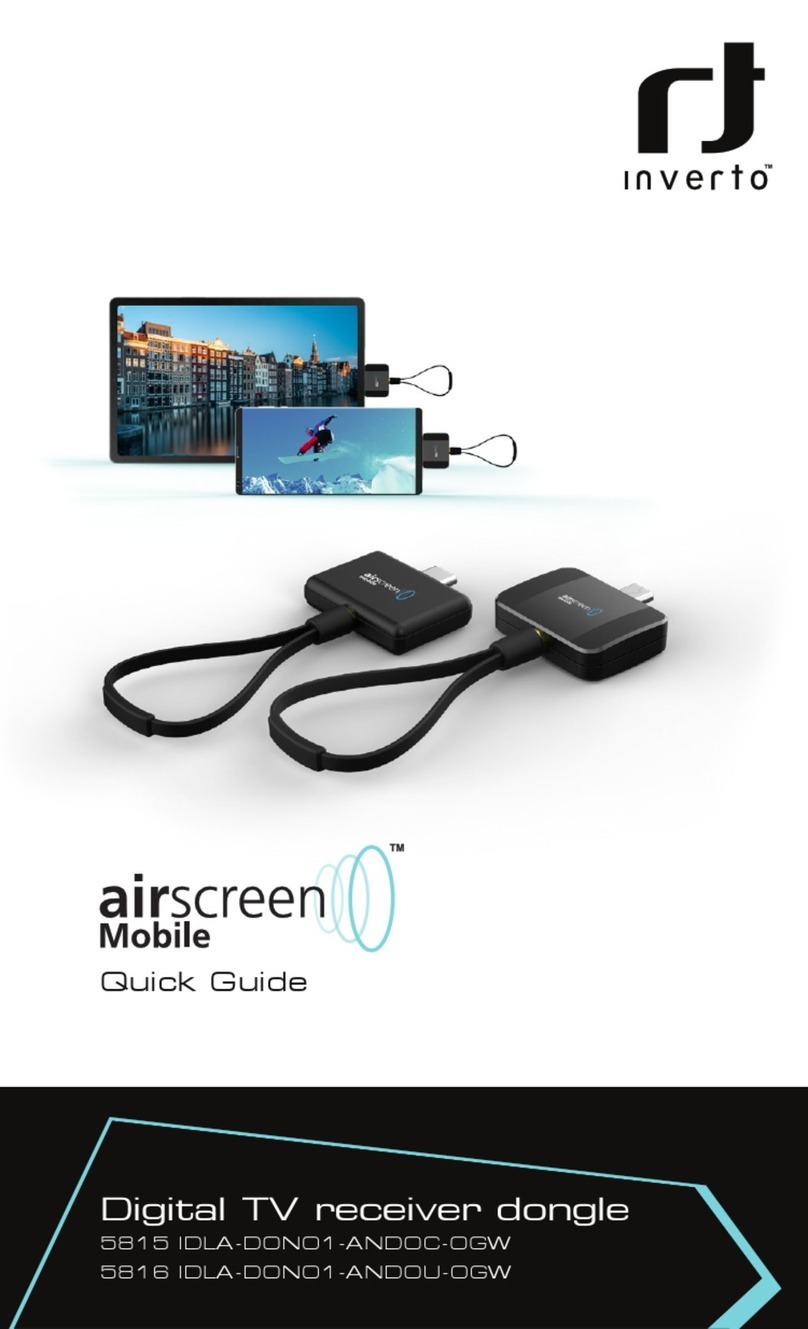
Inverto
Inverto airscreen 5815 IDLA-DONO1-ANDOC-OGW quick guide

Addi-Data
Addi-Data ADDICOM APCI-7800 Technical description
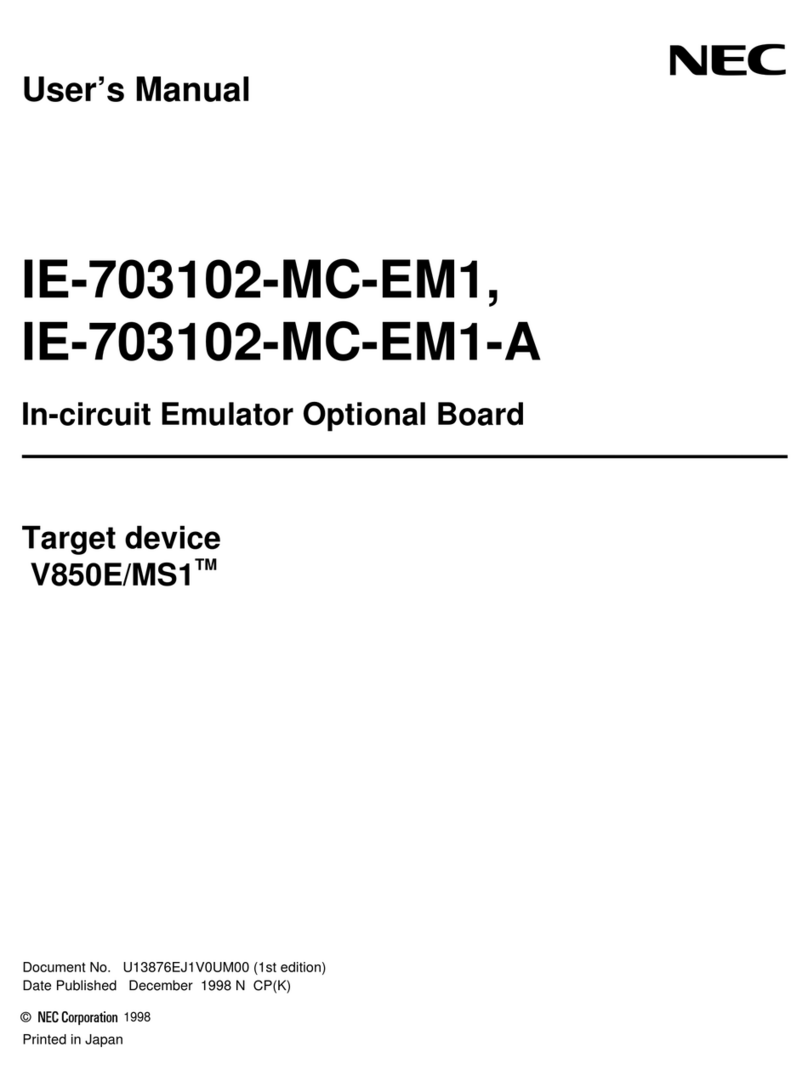
NEC
NEC IE-703102-MC-EM1 user manual

Rockwell Automation
Rockwell Automation 1760-DU Series installation instructions

Renesas
Renesas RA4T1 quick start guide
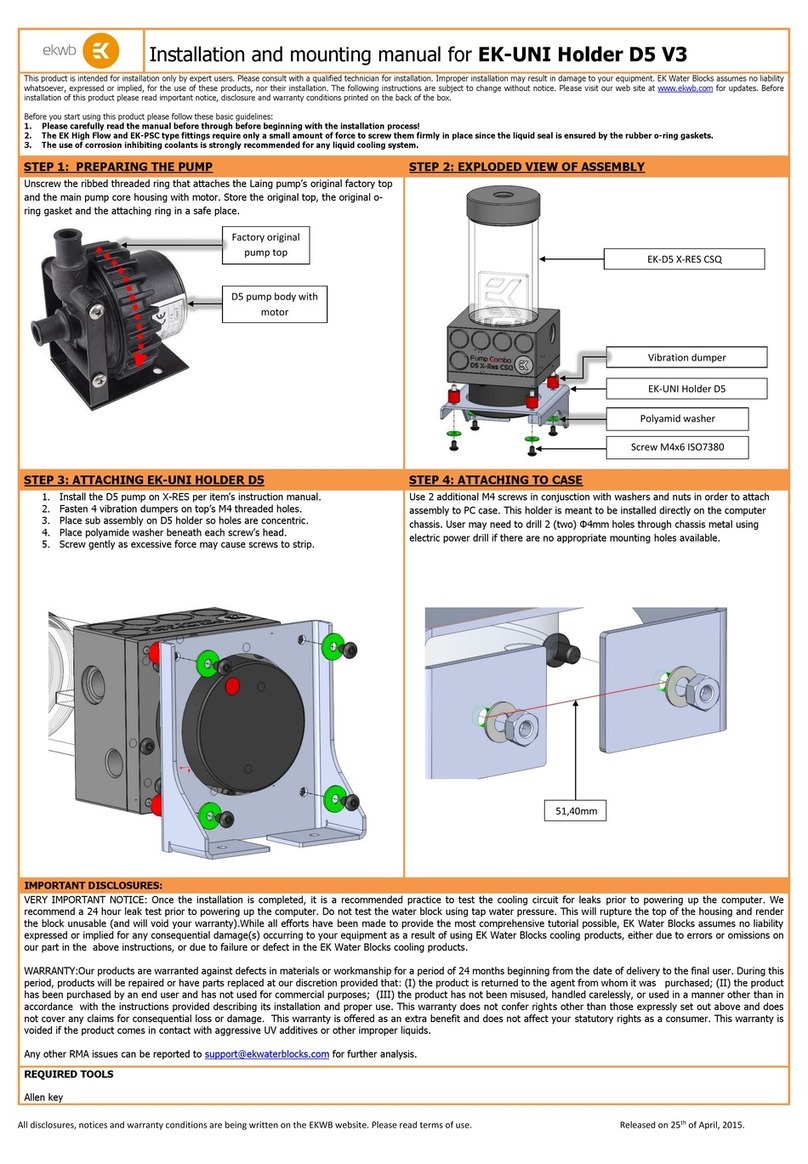
ekwb
ekwb EK-UNI Holder D5 V3 INSTALLATION AND MOUNTING MANUAL
